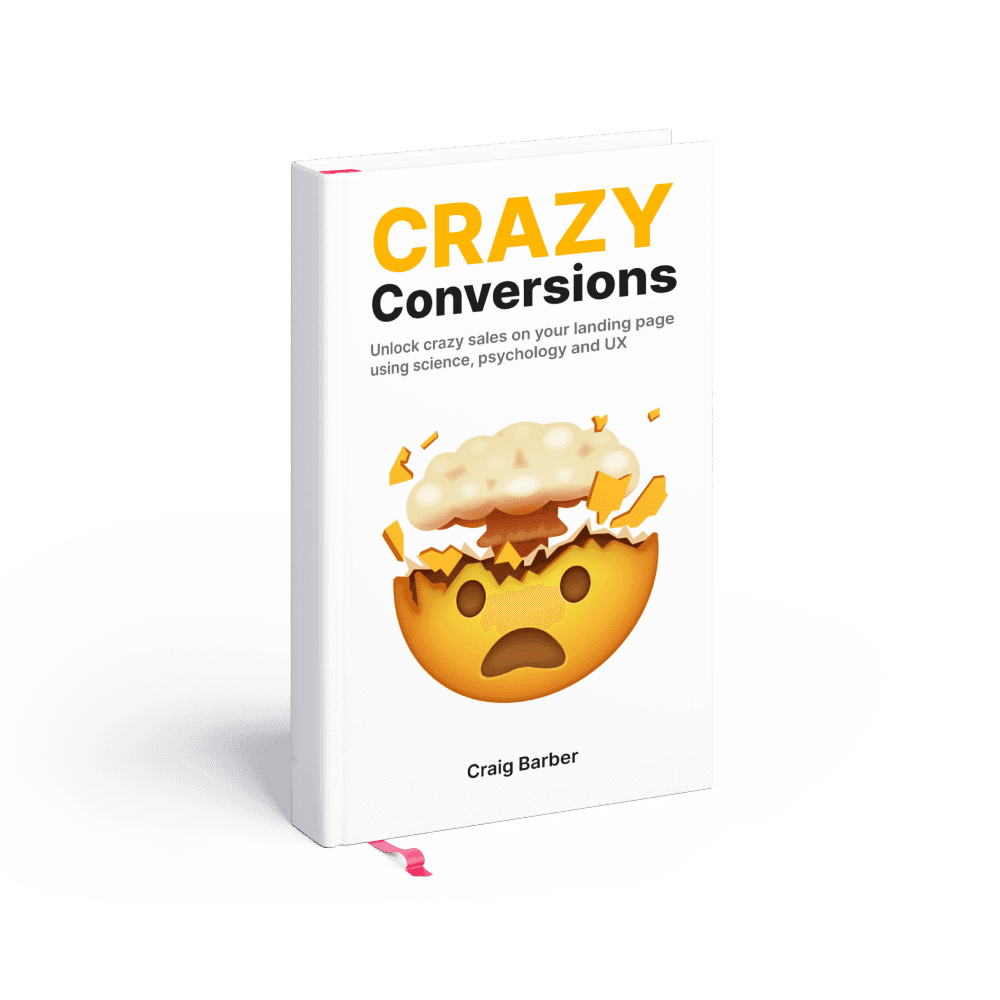50 Cognitive Biases Every UX Designer Must Know
Discover the psychology behind user behavior and learn how cognitive biases shape the way users behave
Welcome, fellow UX designers! Today, we embark on an exciting journey into the depths of human cognition.
As creators of delightful user experiences, it's vital for us to understand the quirks and biases that shape human decision-making.
Cognitive biases, those sneaky mental shortcuts, can influence how users perceive and interact with our digital products.
So, fasten your seatbelts as we dive into the fascinating world of 50 cognitive biases and uncover their impact on user behavior!
What's the Buzz about Cognitive Biases?

Imagine your mind as a labyrinth of intricate pathways, constantly navigating information to make quick decisions.
That's where cognitive biases come into play.
These biases are like shortcuts your brain takes to process complex information and simplify decision-making.
But, be warned, they can also lead to irrational choices and skewed perceptions.
As UX designers, understanding these biases allows us to create interfaces that work harmoniously with users' cognitive tendencies, resulting in seamless and engaging experiences.
Cognitive biases video explainer:
Let's Explore the 50 Cognitive Biases:

1. The Fundamental Attribution Error:

We’re quick to judge others based on personality but lenient when evaluating ourselves, attributing behavior to external factors.
2. Self-Serving Bias:

Success is all thanks to our abilities, while failures are just temporary setbacks caused by external circumstances.
3. In-Group Favoritism:

We tend to show favoritism towards people in our own group, often favoring them over outsiders.
4. Bandwagon Effect:

Ideas and beliefs gain momentum as more people adopt them, spreading like wildfire.
5. Groupthink:

The desire for conformity can sometimes lead to irrational decisions as we prioritize harmony over critical thinking.
6. The Halo Effect:

A positive trait in one area spills over, casting a glow over a person’s other qualities (and even works for negative traits too!).
7. Moral Luck:

Our judgment of moral standing is influenced by the outcome, whether positive or negative.
8. False Consensus:

We often believe that more people agree with us than is actually the case, leading to biased perspectives.
9. Curse of Knowledge:

Once we acquire knowledge, we assume everyone else knows it too, forgetting to provide essential information.
10. Spotlight Effect:

Ever felt like all eyes are on you? That’s the spotlight effect, where we overestimate how much others notice our behavior or appearance.
11. Availability Heuristic:

Our decisions are influenced by examples that come to mind easily, leading to biased judgments.
12. Defensive Attribution:

We tend to blame the victim less if we can relate to their situation, secretly fearing we could be vulnerable too.
13. Just-World Hypothesis:

Believing in a just world, we sometimes assume that acts of injustice are deserved, which may cloud our judgment.
14. Naïve Realism:

We trust our own perception of reality as objective, often assuming others are irrational or biased.
15. Naïve Cynicism:

We overestimate the egocentric bias in others’ intentions and actions, thinking they are more self-serving than they actually are.
16. Forer Effect (aka Barnum Effect):

Vague statements easily make us feel like they’re tailor-made for us, even if they apply to many others too.
17. Dunning-Kruger Effect:

The less we know, the more confident we are, and the more we learn, the more we realize there’s still so much to learn.
18. Anchoring:

Our decisions are heavily influenced by the first piece of information we encounter, often shaping our subsequent choices.
19. Automation Bias:

We sometimes place excessive trust in automated systems, even when they make mistakes.
20. Google Effect (aka Digital Amnesia):

With search engines at our fingertips, we tend to forget information that’s easily accessible online.
21. Reactance:

When our freedom feels threatened, we rebel by doing the opposite of what we’re told, just to assert our independence.
22. Confirmation Bias:

We actively seek out and remember information that confirms our existing beliefs, ignoring contradictory evidence.
23. Backfire Effect:

Ironically, presenting evidence that disproves our beliefs can sometimes strengthen our initial convictions.
24. Third-Person Effect:

We believe others are more influenced by mass media than we are, underestimating our own susceptibility.
25. Belief Bias:

We judge an argument’s strength based on how plausible the conclusion seems to us, rather than the evidence supporting it.
26. Availability Cascade:

Repetition of collective beliefs makes them appear more plausible and accepted in society.
27. Declinism:

We tend to idealize the past while perceiving the future negatively, often believing that societies are in decline.
28. Status Quo Bias:

Change can be unsettling, so we often prefer things to stay the same, considering any deviation as a loss.
29. Sunk Cost Fallacy:

We’re reluctant to let go of investments or decisions, even when they’re not in our best interest, simply because we’ve already invested in them.
30. Gambler’s Fallacy:

We mistakenly believe that past events influence future probabilities, even when they’re unrelated.
31. Zero-Risk Bias:

We’re inclined to eliminate even the tiniest risks entirely, disregarding other options that might reduce overall risk more effectively.
32. Framing Effect:

How information is presented greatly impacts our decisions, as we can draw different conclusions from the same information depending on its framing.
33. Stereotyping:

Without specific information about individuals, we adopt generalized beliefs about a group’s characteristics, leading to biases.
34. Outgroup Homogeneity Bias:

We perceive members of our own group as more diverse while viewing out-group members as more similar to each other.
35. Authority Bias:

We tend to trust and be influenced by the opinions of authority figures, often giving their words significant weight.
36. Placebo Effect:

Believing a treatment will work can sometimes produce a small physiological effect, showcasing the power of our minds.
37. Survivorship Bias:

We focus on the successes while overlooking the failures within a process, leading to skewed perceptions.
38. Tachypsychia:

Time can feel distorted under certain circumstances, such as trauma, drug use, or intense physical exertion.
39. Law of Triviality (aka “Bike-Shedding”):

We give excessive attention to trivial issues, often avoiding more complex ones.
40. Zeigarnik Effect:

Incomplete tasks tend to stick in our minds more than completed ones, creating mental tension until they’re finished.
41. IKEA Effect:

When we participate in creating something, we attach greater value to it, appreciating our own contribution.
42. Ben Franklin Effect:

Doing favors for others can create a sense of liking and increase the likelihood of doing more favors for them.
43. Bystander Effect:

The presence of others can diminish our willingness to help a victim, assuming someone else will step in.
44. Suggestibility:

Especially in children, suggestions can be mistaken for memories, blurring the lines between reality and imagination.
45. False Memory:

Our minds can sometimes construct memories that never occurred, making us believe in events that didn’t happen.
46. Cryptomnesia:

Real memories can be mistaken for products of our imagination, leading to confusion about the origins of our thoughts.
47. Clustering Illusion:

We tend to find patterns and clusters even in random data, sometimes seeing connections that don’t actually exist.
48. Pessimism Bias:

We often overestimate the likelihood of negative outcomes, perceiving them as more probable than they actually are.
49. Optimism Bias:

Conversely, we can be overly optimistic about positive outcomes, underestimating potential risks and challenges.
50. Blind Spot Bias:

We’re often oblivious to our own biases, readily spotting them in others while remaining unaware of our own tendencies.
Congratulations on completing this whirlwind tour of 50 cognitive biases!
By understanding these quirks of the human mind, you're equipped with invaluable insights to create exceptional user experiences.
As UX designers, we have the power to anticipate and design around these biases, fostering positive interactions and influencing user behavior in meaningful ways.
So, harness this knowledge, embrace empathy, and let's craft experiences that delight, engage, and navigate the fascinating landscape of human cognition.
Boost sales in 30 days or your money back
Introducing Crazy Conversions, the powerful playbook helping founders unlock sales on their landing page
Boost my sales now $29

5/5 stars on Gumroad





